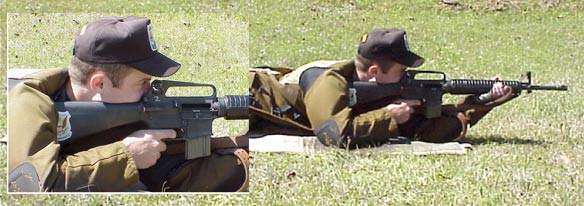Having a ball with my first AR-15. I am having problems with my technique used with iron sights. The amount of side pressure I apply in my cheek weld varies a bit. That variation causes a tremendous amount of parallax and thus variation in POA vs POI. I certainly understand consistent cheek weld is important and this demonstrates it quite clearly. I just don't see how to easily get the consistency required for any level of accuracy with irons. I caught this by noting to was continually adjusting the rear sight as my cheek weld became less firm laterally during the session.
Red dot of course nearly eliminates this effect...
Thanks for any feedback.
Red dot of course nearly eliminates this effect...
Thanks for any feedback.



